Emotionally Expressive Motion Controller for Virtual Character Locomotion Animations
Project for the acquisition of a Masters Degree in Computer Science and Engineering
Diogo Silva
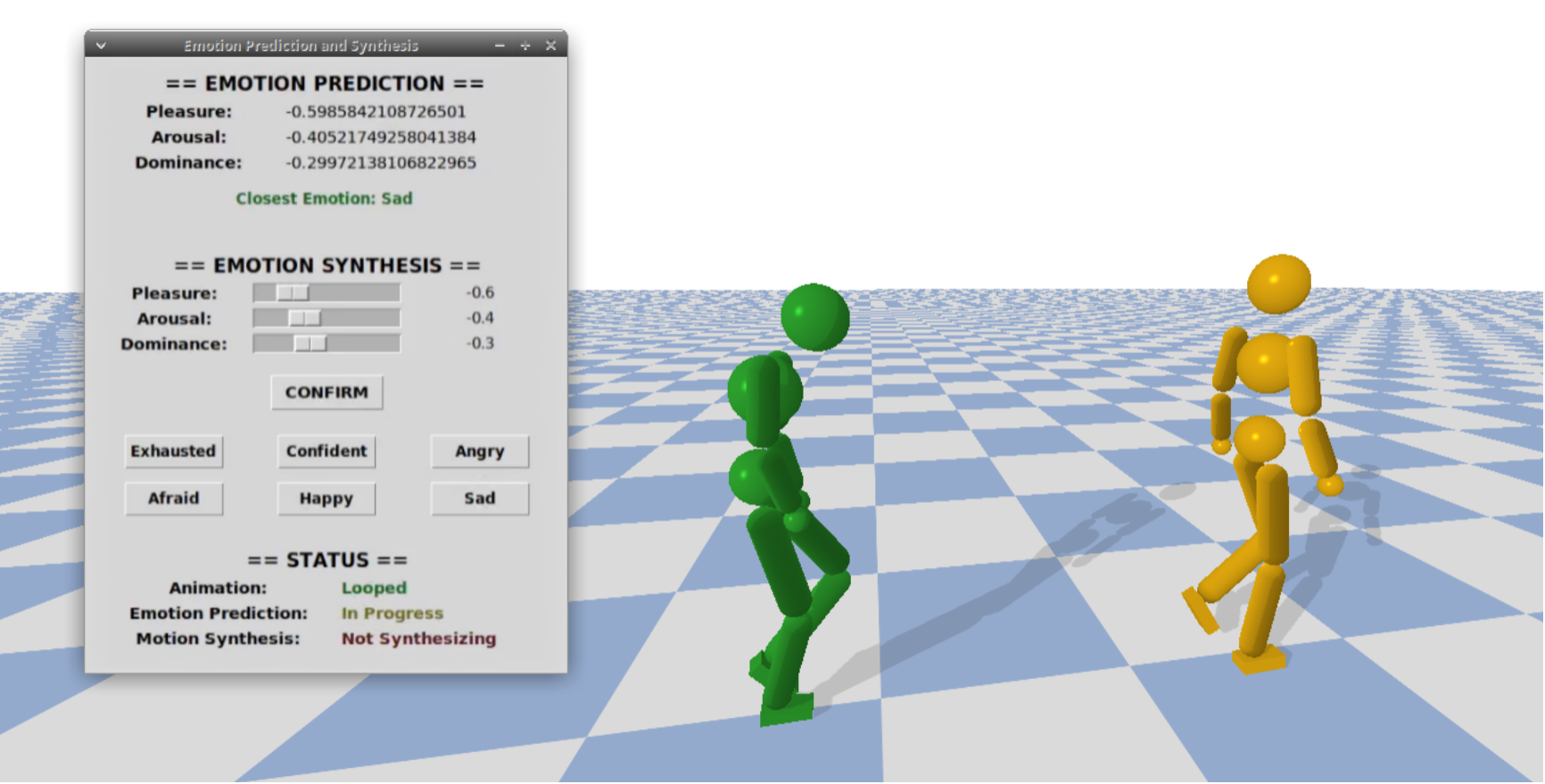
Abstract
Style and emotional expressiveness are essential aspects of virtual character computer animation. For a virtual character to display different emotions, motion capture data conveying each desired style has to be recorded, even if the baseline motion is the same. Animators then have to refine and conjoin each recording in order to create the final animations making it a timely and costly process. Although there have been efforts made into the automatic generation of motions through Deep Reinforcement Learning techniques, the problem persists that, for each new desired emotion, reference data displaying said emotion has to be readily available and a new motion has to be learned from scratch. By combining Machine Learning with Emotion Analysis - in particular Laban Movement Analysis and the Pleasure, Arousal, Dominance Emotion State Model - we have developed a system that is capable of not only identifying the perceived emotion of virtual character locomotion animations but that also allows us to alter the character's expressed emotion in real time and without the need of additional data.
Video
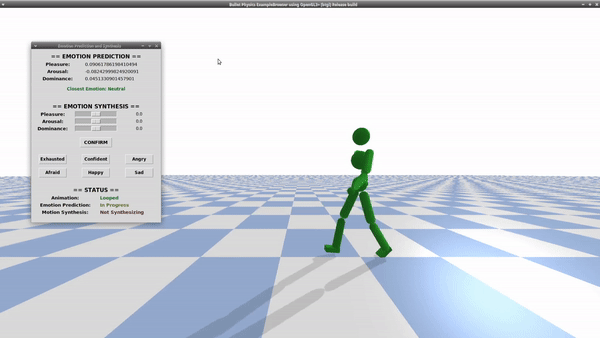

Gallery
System and GUI
 Synthesized Sad Policy
Controlled Character (left) and Reference Motion (right)
Synthesized Sad Policy
Controlled Character (left) and Reference Motion (right)
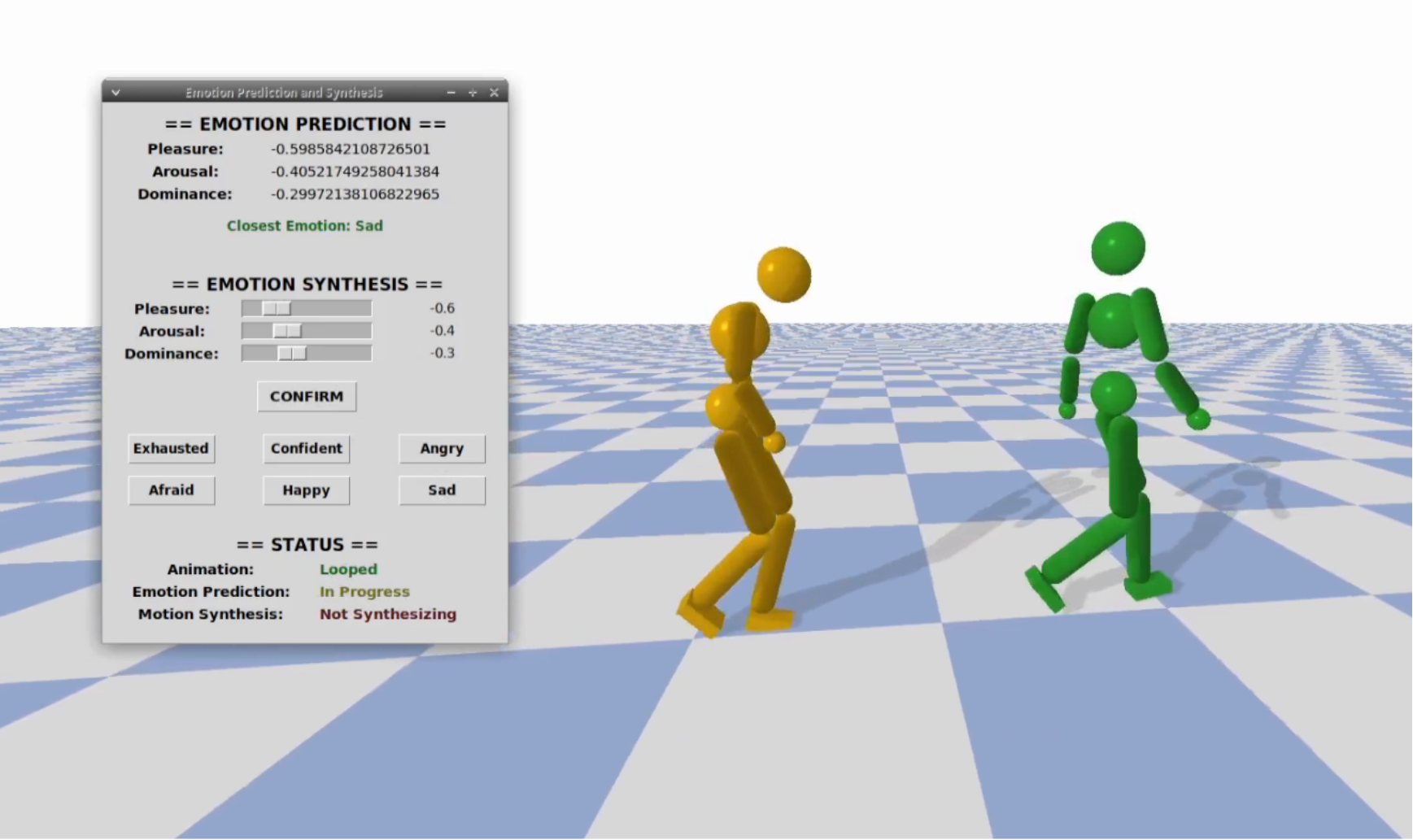 Synthesized "Afraid"
Motion on a Kinematic Character
Synthesized "Afraid"
Motion on a Kinematic Character
 Synthesized "Confident"
Motion on a Policy-Controlled Character
Synthesized "Confident"
Motion on a Policy-Controlled Character
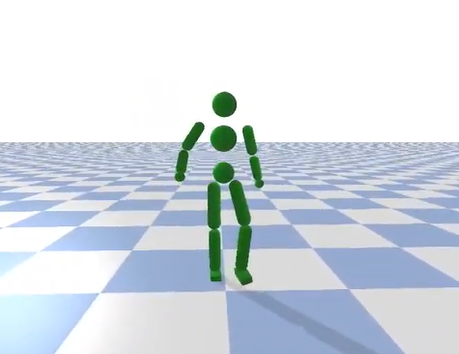 Synthesized "Tired"
Motion on a Policy-Controlled Character
Synthesized "Tired"
Motion on a Policy-Controlled Character
 Synthesized "Happy"
Motion on a Policy-Controlled Character
Synthesized "Happy"
Motion on a Policy-Controlled Character
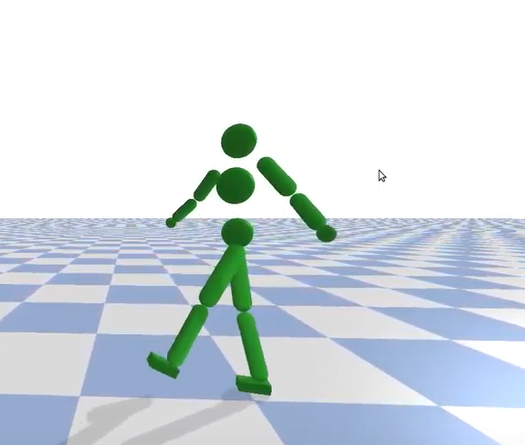 System
Architecture
System
Architecture
 Emotion Prediction
Subsystem
Emotion Prediction
Subsystem
 Motion Synthesis
Subsystem
Motion Synthesis
Subsystem
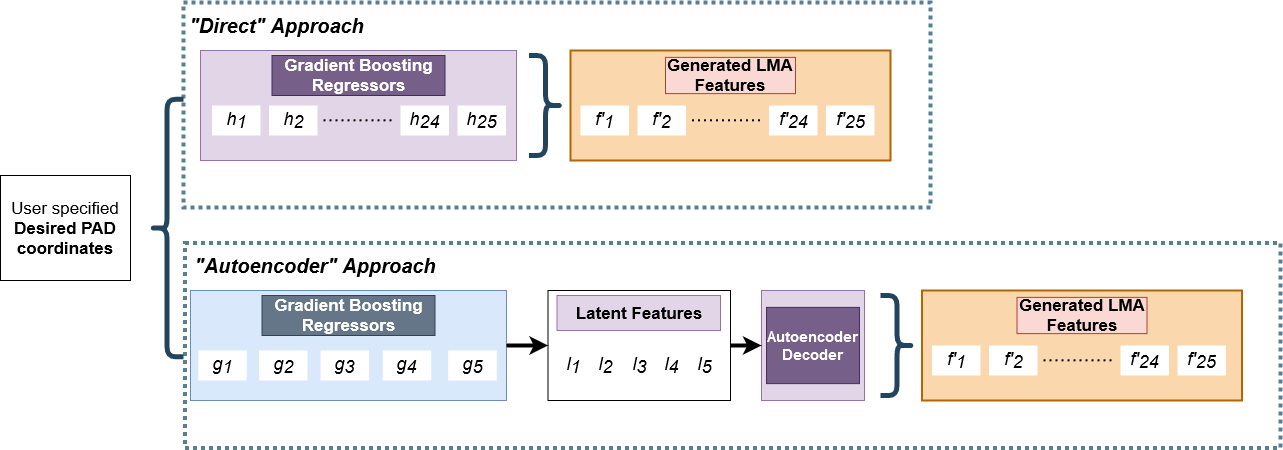 Emotion Prediction
Results
Emotion Prediction
Results
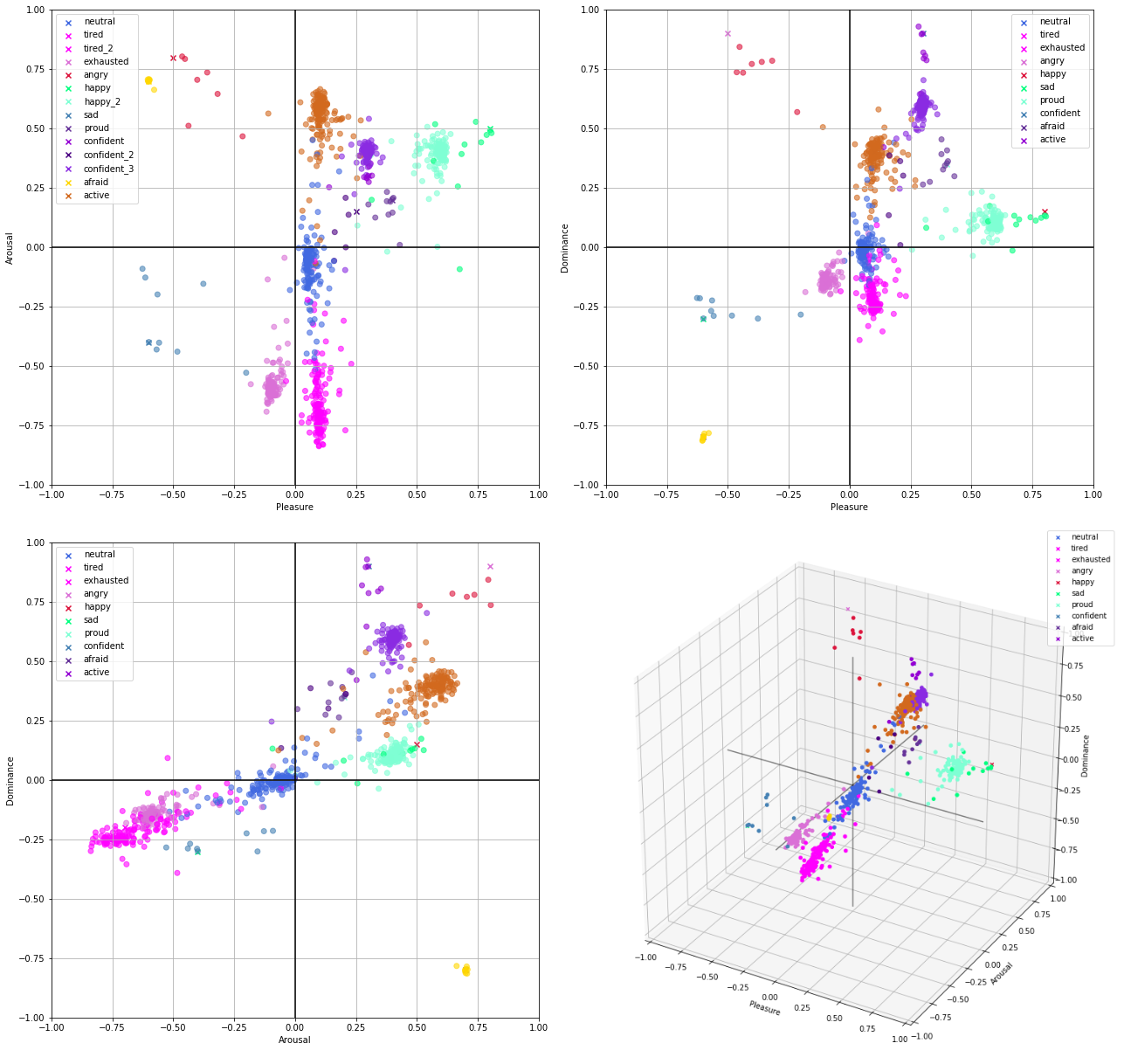 Motion Synthesis
Heuristic Rules
Motion Synthesis
Heuristic Rules
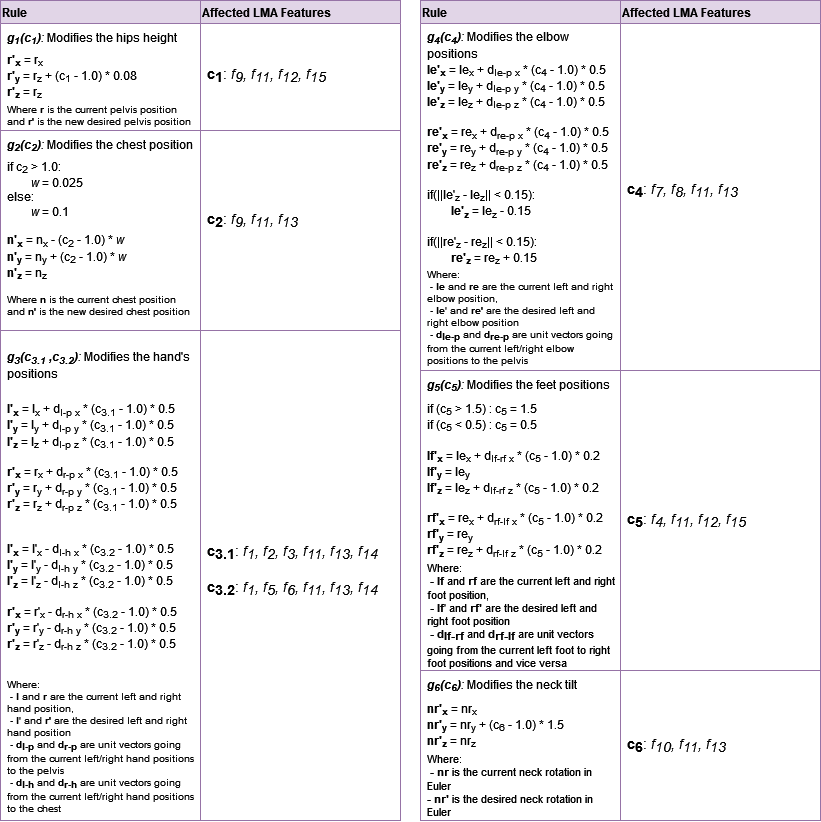 User Emotion
Classification Results for Mocap and AutoEncoder Synthesized Clips
User Emotion
Classification Results for Mocap and AutoEncoder Synthesized Clips
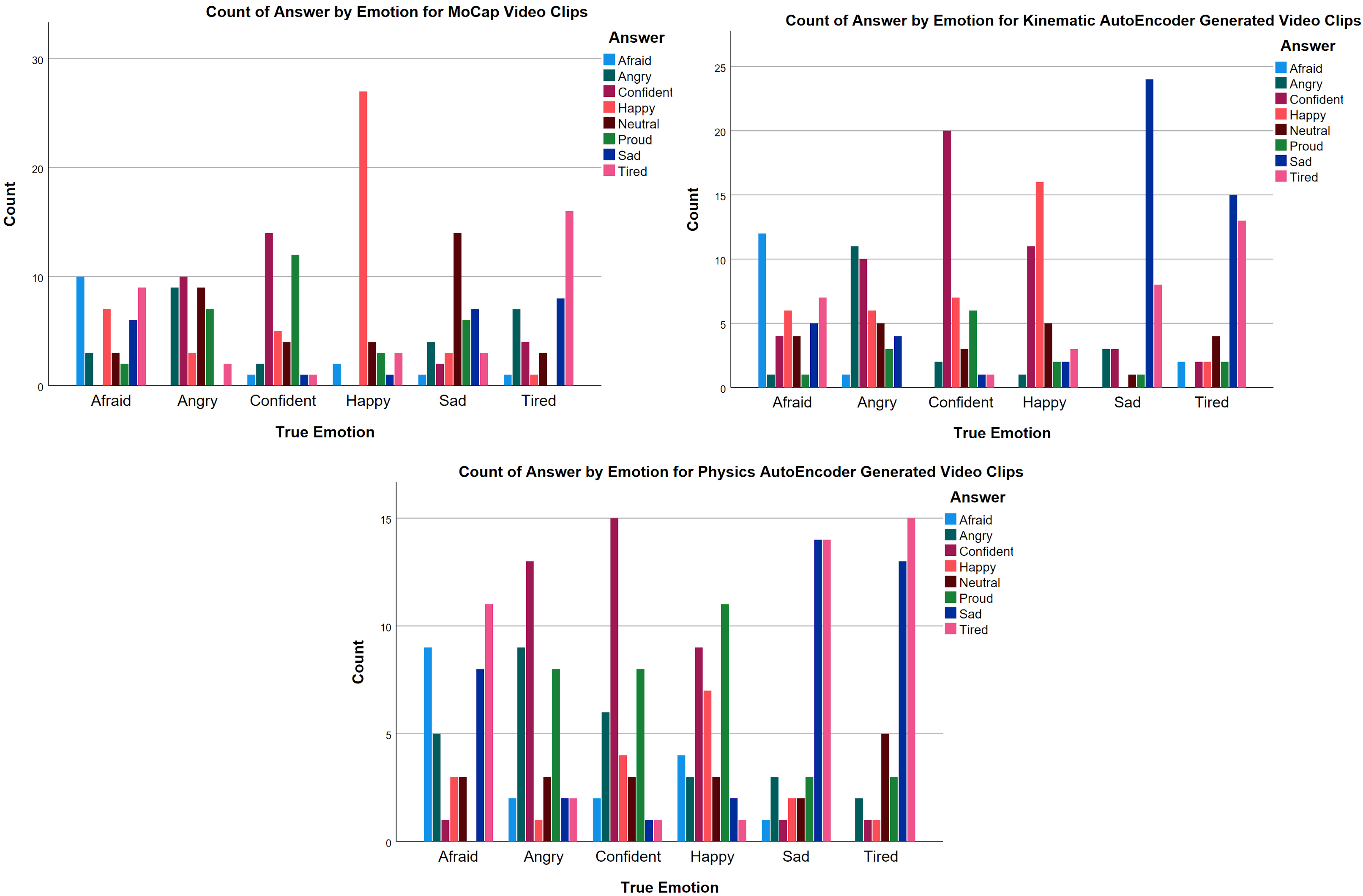 User Emotion Agreence
Results for Mocap and AutoEncoder Synthesized Clips
User Emotion Agreence
Results for Mocap and AutoEncoder Synthesized Clips







